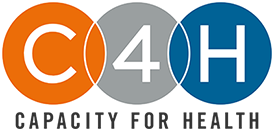Let’s face it: community-based outreach is a vital part of bringing in clients to your HIV and public health programs. Nothing brings awareness to your services quite like personalized interactions with community members. But how do you ensure the safety of your outreach workers? Below are 3 essential tips from the C4H Resource Library on policies and procedures that every organization should know before conducting HIV outreach in the field:
Improving HIV Outreach
-
Switch It Up
Finding yourself getting bored or complacent with your outreach activities? Partner and collaborate with different agencies! Identify alternate locations, get creative with how you engage your community, or find different times when you can access potential clients.
-
Know How to De-escalate
When faced with an aggressive or hostile individuals, it is helpful to know some basic methods for defusing tense situations. Possible de-escalation strategies: 1) validate the aggressor’s point of view, 2) direct them to an appropriate resource, 3) be aware of your own personal safety and when to walk away.
-
Know Your Place
Your HIV outreach environment may include conflicts that have nothing to do with your outreach activities. Stay away from fights, drug trades or other illegal activities, isolated areas, and any potentially dangerous situations that could put you in harm. Remember your role in the community when you are conducting outreach (reduce HIV risk, not saving individuals). Leave any situation before you are caught in the middle of a conflict.
For more tips on how to strengthen HIV outreach worker safety, download your free copy of the C4H Outreach Safety Checklist.




